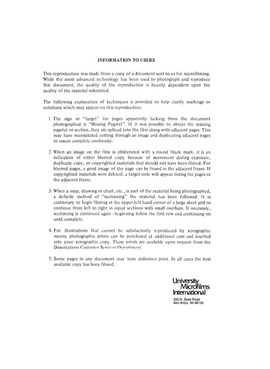| dc.contributor.author | Tapp, James Bryan, | en_US |
| dc.date.accessioned | 2013-08-16T12:28:57Z | |
| dc.date.available | 2013-08-16T12:28:57Z | |
| dc.date.issued | 1983 | en_US |
| dc.identifier.uri | https://hdl.handle.net/11244/5167 | |
| dc.description.abstract | The deformation history of a small portion of the Virginia Great Valley is described. Pressure solution acted to form two geometrically distinct cleavages in the Conococheague Formation. Limestone layers contain a penetrative cleavage(Sp) formed by the dimensional orientation of calcite microspar and are thickened in the hinge zones of folds and thinned on the limbs of folds. Dolomite layers contain a spaced solution cleavage(Ss) and maintain constant thickness around folds. Cleavage does not transect the fold axes in the fold hinge zones. | en_US |
| dc.description.abstract | Cleavage was formed by pervasive pressure solution and some twinning (in crystals larger than 120 microns in diameter) in limestone layers and pressure solution along discrete zones in dolomite layers. Crystal size, strain rate and composition controlled deformation mechanism. The presence of impurities such as phyllosilicates aid in the formation of discrete solution zones. | en_US |
| dc.description.abstract | One hundred oriented samples of the Conococheague Formation were collected. Incremental strain and accumulated strain were measured using syntectonic fibrous calcite and deformed ooids respectively. Layering was initially inclined as much as 30(DEGREES) to compression. The deformation was locally non-coaxial as viewed by the deforming material on the fold limbs but was irrotational as viewed from a global reference frame (preserved in fold axis). Penetrative cleavage(Sp) parallels the elongation axis of accumulated strain. The initial and final orientation of Ss are nearly identical with the initial and final orientations of incremental elongation. | en_US |
| dc.description.abstract | The volume loss due to pressure solution is estimated by comparing the abundances of metallic elements between matrix and solution zones using electron dot maps prepared on an EDX system. Hinge zones and steeply dipping limbs of folds have closer spacing and greater volume loss than the shallowly dipping limbs of folds. The hinge zones of folds experienced the greatest strain rate and volume loss. Strain rates are greater in limestones than in dolomites. | en_US |
| dc.format.extent | xii, 296 leaves : | en_US |
| dc.subject | Geology. | en_US |
| dc.title | Relationships of rock cleavage fabrics to incremental and accumulated strain in a portion of the Blue Ridge, Virginia. | en_US |
| dc.type | Thesis | en_US |
| dc.thesis.degree | Ph.D. | en_US |
| dc.thesis.degreeDiscipline | Conoco Phillips School of Geology and Geophysics | en_US |
| dc.note | Source: Dissertation Abstracts International, Volume: 44-06, Section: B, page: 1756. | en_US |
| ou.identifier | (UMI)AAI8324895 | en_US |
| ou.group | Mewbourne College of Earth and Energy::Conoco Phillips School of Geology and Geophysics | |
